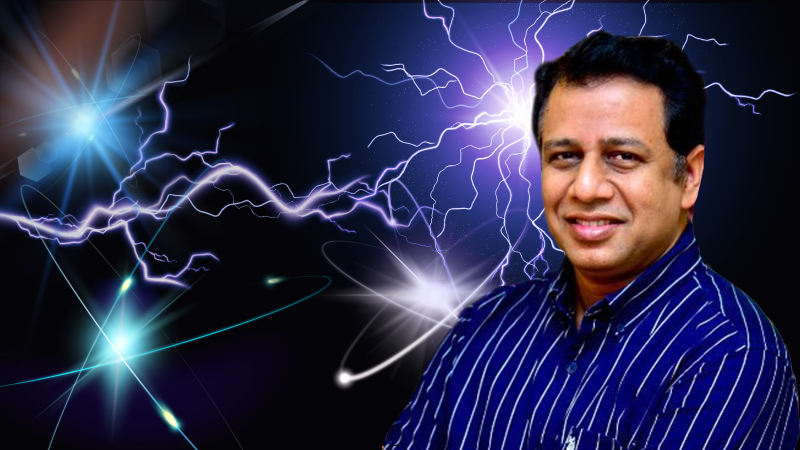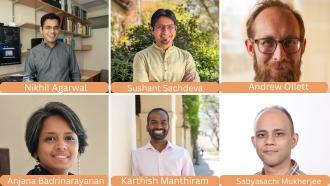
Prof Bedangadas Mohanty of the National Institute of Science Education and Research, Bhubaneshwar, has been awarded the Infosys prize in Physics 2021 for investigations of nuclear force. At the Brookhaven National Laboratory and the European Organization for Nuclear Research, he determined the transition temperature of the quark-gluon plasma to hadronic matter, observed heavy antimatter nuclei, observed nuclear spin-orbital angular momentum interactions, and other effects in the quark-gluon plasma.
The Infosys Science Foundation gives the Infosys Prize every year to honour outstanding achievements of contemporary researchers and scientists in six categories (Technology and Engineering, Humanities, Mathematics, Life Sciences, Physics and Social Sciences). The winners receive a gold medal, a citation and a purse of US $ 100,000 (equivalent to about ₹ 75 lakhs today). The money is tax-free for winners in India.
"I am pleased to get this recognition. I feel honoured being a part of a very illustrious list of laureates and being selected by a jury whose work I immensely respect. It is very satisfying to get this recognition from peers," said Prof Mohanty.
"Prof Mohanty is the first researcher to observe heavier than hydrogen nuclei made of antimatter. He was the first to observe the formation of quark-gluon plasma – fluid with the largest know vorticity, to study the physics of particle production mechanisms, fragmentation processes, and Parton energy losses in the heavy-ion collision, to search for fractionally charged particles and disoriented chiral condensates," says Prof Shrinivas Kulkarni, jury, Infosys Prize for Physics 2021.
Matter around us is made of atoms and molecules. The atom has a nucleus made of protons and neutrons. Even more fundamental blocks make up the particles in the nucleus; quarks and gluons are examples of these building blocks. Most of the visible universe is made of electrons, quarks and gluons. While we can observe isolated electrons, we cannot easily observe quarks and gluons in isolation. These particles had an independent existence for a few microseconds at the beginning of the universe. Finding their properties will answer questions such as how the universe was formed and reached its current state.
By making heavy nuclei such as gold collide with each other at extremely high speed, researchers can create conditions that allow them to study fundamental particles such as quarks and gluons. These experiments are done in huge particle accelerators such as the large hadron collider.
"It is interesting to note that the technology used to create these experiments has also found applications useful to humankind. For example, the detectors used to measure the deflection of the particles can be used to improve medical imaging. The accelerator technology can be modified to treat cancer using proton therapy," explained Prof Mohanty in an exclusive interview with Research Matters.
What excites Prof Mohanty most about experimental high energy physics is that it helps answer the most fundamental questions of the universe and our being,
and it also has yielded technologies that can also be used for the benefit of society.
These elementary particles are bound together by strong and weak interactions. Prof Mohanty is interested in studying the phase diagrams associated with systems whose underlying interactions are strong. At normal and high temperatures, quarks and gluons in the matter are bound to each other by strong forces. At extremely high temperatures of a trillion degrees, the quarks and gluons are not confined to this bonding. The phase becomes fluid. Prof Mohanty created the temperature in the laboratory and made observations about the phase changes.
When he went to the US as a postdoc in the Lawrence Berkeley National Laboratory, he was offered a position in the lab after his postdoc but turned it down because he wanted to come back to India and work here. Being here in India, he has been associated with the STAR experiment for over a decade and now leads one of the six working groups. He is the first Indian to have the honour of leading a consortium of scientists from different countries. His contributions also led him to be elected as a Fellow of the American Physical Society, a very rare honour for a person outside the US to be receiving this.
"The current expertise we have gained is due to participating in international programs. It would be good for India to focus on building a good underground laboratory to do physics related to neutrinos, dark matter or searching fractionally charged particles," notes Prof Mohanty, responding to a query on the future outlook for experimental high energy physics in India. One of the fundamental and open questions bothering science at large is that while we know neutrinos have mass, we still don’t know their absolute mass. He emphasised the need for establishing the Indian Neutrino Observatory (INO) to be able to address this.
If the INO is established, one of the detectors it would have can differentiate between neutrinos and antineutrinos. Such rare experiments can be done by setting up a world-class facility within India. This will also enable international participants to conduct experiments here, unlike how we now rely on experimental facilities abroad. Thus, a large-scale international experiment running in India will automatically develop and train human resources in experimental science, who can carry out cutting edge research in experimental high energy physics. In addition, our industry will have a chance to develop such detector technologies, while alongside, the related fields can be developed.
Prof Mohanty stands out as an accomplished scientist who has managed to achieve such success in India and thus is an inspiration to a generation of young researchers to be able to strive for excellence and pursue their dreams. The team at Research Matters wishes him all the best and once again congratulates Prof Mohanty for this award.
Editor's note: Prof Bedangadas Mohanty's name was misspelt and has been rectified. The error is deeply regretted.






